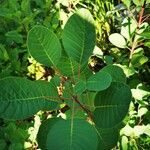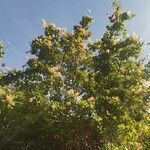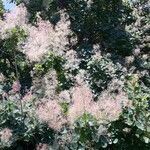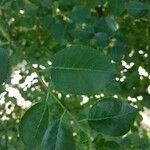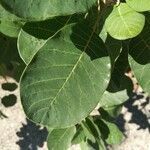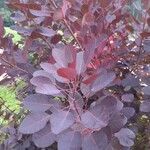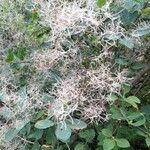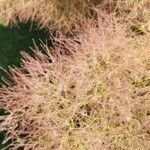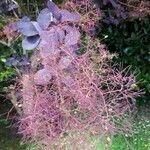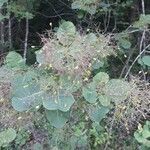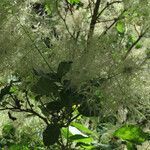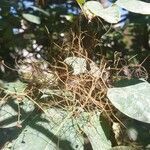A rounded shrub. It grows 3-4.5 m tall. It loses its leaves during the year. They turn rich red before falling. The leaves are oval and green. They are about 7 cm long. They do not have teeth. They have long stalks. The flowers have smoky plumes with a pink tint which turns grey. These are in lax panicles 15-20 cm long. This is due to the fine thread like dull purple branches. The flowers and fruit are very small. The fruit are dry and flattened. They are kidney shaped and 3-4 mm long.
